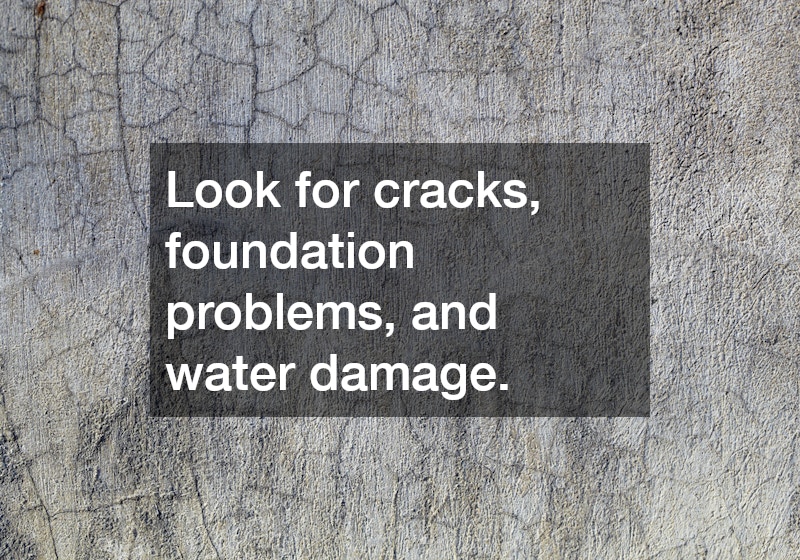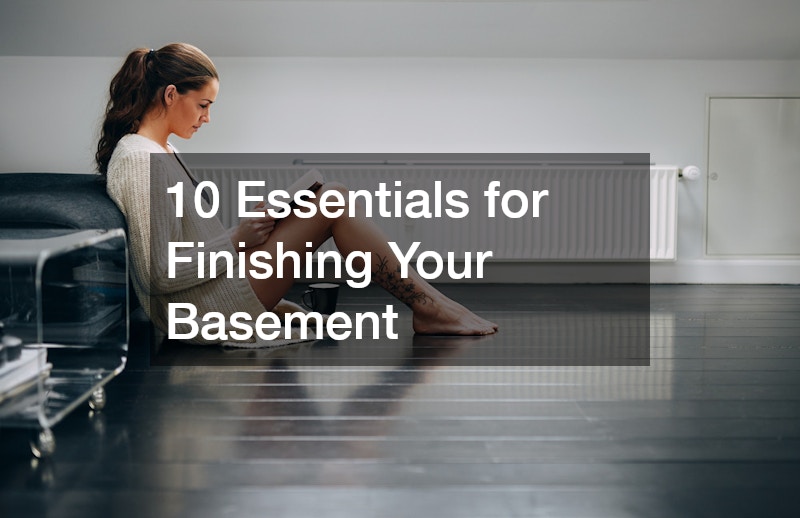The finished basement will increase your living space as well as the value of your house. Planning is the key to success, whether you are creating a new entertainment space, family room, or home office. This article is a comprehensive guide for Australian homeowners that covers all the essentials of a basement finishing project. You’ll learn how to transform your basement into a functional and comfortable space.
1. What Is the First Step in Basement Finishing?

Plan and design your space according to your needs. Decide what the basement will be used for – whether it is an extra bedroom or home gym. Set a realistic budget and a detailed plan in Australian dollars. This will help you stay on track with your project.
Prior to starting, you should complete the following tasks:
- Check for structural problems: Look for cracks, foundation problems, and water damage. Consult a structural engineer, or foundation specialist if you notice any issues.
- Get the necessary permits. Make sure you follow local council regulations.
- If needed, hire professionals: Although DIY projects can be cost-effective, you may want to consider hiring licensed contractors for electrical, plumbing or structural repairs.
- Test for Hazards: Check for asbestos, and remove it safely if you find any. Asbestos removal is regulated in Australia.
- Pest Control: Australian houses are vulnerable to termites. If necessary, arrange for a termite treatment and inspection.
Prepare Additional Preparations:
- Waterproofing Install a sump to prevent flooding and manage water ingress. In the event of a power failure, ensure that it’s backed up by a battery powered system.
- Utility Checks: Assess your water heater, HVAC, and other utilities to determine if they need repairs or replacements. It is also a great time to schedule any septic tank service if necessary.
2. How Do You Ensure Basement Waterproofing?
Protecting your basement against damage caused by flooding and moisture is essential. This step is especially important in Australia, where the climate can be unpredictable, with seasonal rain and flash floods.
How to Waterproof Your Basement:
- Check for cracks and leaks: Seal all gaps between the walls or floors of your foundation using waterproof sealants.
- Install drainage system : Make sure your home has a proper drainage. A French drain will effectively divert water away from the foundation.
- Install a waterproof membrane Use a high quality waterproofing membrane on the walls and floor of your basement.
- Install an sump-pump A sump-pump that is reliable will help you manage water accumulation. Choose models that have a backup electricity supply.
- Dehumidifiers Install a humidifier to prevent mould growth and control humidity.
It is important to maintain your waterproofing system regularly in order to keep it working for a long time.
3. What Are the Best Materials for Basement Insulation?
Insulation keeps your basement warm and comfortable, while also reducing energy consumption. Insulation also helps to prevent issues such as condensation and mould.
Recommended Insulation Materials for Australia:
- Foam Board Insulation: Offers excellent thermal and moisture resistance.
- Fibreglass Batts : An economical option that requires proper installation in order to avoid moisture issues.
- Spray Foam Insulation: Offers superior cover and is ideal for sealing cracks and gaps.
Important Considerations:
- R Value: Select insulation with a higher R value for maximum thermal resistance. R-values for Australian homes can range from R2.0 to R6.0 depending on climate zones.
- Installation : Make sure that the product fits snugly without any gaps. An incorrect installation can compromise the effectiveness.
- Professional Assistance: Consult a licensed contractor for advice on the best materials and methods to use.
4. How to Choose the Right Flooring?

The potential for moisture in your basement makes it vital to choose the right flooring. Durability, aesthetics, and comfort should all be considered when making your choice.
Popular Basement Flooring Options:
- Vinyl Flooring is available in many styles and colors.
- Ceramic Tiles: These tiles are durable and resistant to water, which makes them perfect for basements that tend to be moist.
- Engineered Wood: Provides the appearance of hardwood, but is more resistant to moisture.
- Epoxy flooring is a practical option for utility rooms, as it’s durable and easy-to-clean.
Installing a New System:
- Moisture Barrier: Installing a vapour-barrier before installing flooring will prevent dampness.
- Professional installation : For complex materials such as tiles or epoxy, a professional installation is required to achieve a perfect finish.
- Cost considerations : The cost of flooring in Australia varies widely. It can range from $20 per square metre to as much as $120, depending on material.
5. Which Lighting Solutions Work Best for Basements?
It is important to have good lighting in your basement for it to feel functional and inviting. Basements are often dark and lack natural lighting, so strategic lighting is essential.
Recommended Lighting Options:
- Recessed Lighting: Offers uniform illumination without compromising headroom.
- Track Lighting: Flexible, versatile and allows you to direct the light wherever needed.
- Pendant Lights: Adds decorative touches to seating or dining areas.
- LED Lights: Long-lasting and energy-efficient, they are perfect for cutting down on electricity bills.
Enhancing Natural Light:
- Light Wells: Create openings that allow natural light to enter.
- Increase transparency by using glass doors or panels.
- Reflective Surfaces: Use mirrors and light-coloured paint to brighten up the room.
6. How to Ensure Proper Ventilation?
Ventilation is crucial for maintaining good air quality and preventing moisture accumulation. Poor ventilation can cause musty odours, and even mould. These are issues that often occur in Australian basements.
Ventilation Systems:
- Exhaust Fans: Eliminate stale and excessive humidity.
- Dehumidifiers : Reduce moisture levels to prevent mould growth.
- Air Purifiers: Improve the air quality by removing pollutants and allergens.
Open windows and doors as often as possible to circulate fresh air. Consider installing ventilation systems in your basement if there are no windows.
7. What Are the Options for Basement Walls and Ceilings?
The walls and ceilings of your basement are important to its overall functionality and aesthetics.
Materials for Walls and Ceilings:
- Drywall is a cost-effective, versatile and flexible option for finishing walls.
- Wood panelling : Brings warmth and character into the room.
- Acoustic Panels are ideal for soundproofing your home and creating an entertainment room.
- Paint finishes Use light, durable paints that are resistant to mould.
It is important to soundproof the basement if it will be used for entertainment or as a home office. For better noise control, add acoustic materials or insulation.
8. How to Choose the Right Heating and Cooling Solutions?
Due to their position below ground, basements can be difficult to heat or cool. The right systems will ensure year-round comfort.
Heat and Cooling Options:
- Mini-split systems are energy-efficient and simple to install.
- Radiant Floor Heating: This type of heating is effective and even in cold climates.
- Electric heaters are a cost-effective and portable option for small spaces.
Energy Efficiency:
The use of energy-efficient systems will reduce your utility costs. Consider solar powered options and products with high energy star ratings to reduce costs.
9. How to Incorporate Plumbing Effectively?
Addition of plumbing in your basement will enhance its functionality. This is especially true if it includes a kitchenette, bathroom or laundry area.
Important Considerations:
- Plumbing Layout: With the help of a plumber, design a layout that is efficient and meets Australian standards.
- Drainage : Make sure that you have a proper drainage system to avoid flooding.
- Waterproof Fixtures: Use corrosion resistant materials to handle moist environments.
The cost of adding plumbing fixtures to your project may be higher, but it will also increase the value of your house.
10. What Furnishings and Finishes to Consider?
The right furniture and finishes will bring your basement to life.
Recommendations:
- Choose furniture that is durable: Materials like metal and treated wood can resist humidity.
- Multipurpose Pieces: Make the most of your space by using furniture that has built-in storage.
- Decor Accents: Personalise your home with artwork, rugs, and cushions.
Australia has many affordable furniture options. Shop during the end-of season sales to get the best bargains.
Conclusion
The addition of valuable living space to your home and the increase in property value can be achieved by a well-finished basement. This comprehensive checklist will help you ensure that your project runs smoothly and successfully. Each step, from waterproofing to furnishing, is crucial to creating a functional and comfortable basement that meets your needs. Your basement can be a feature of your Australian house if you plan carefully and pay attention to details.
